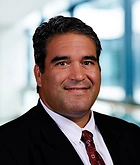Client Alert: USEPA Announces New Source Performance Standards and National Emission Standards for Hazardous Air Pollutants for the Oil and Gas Industry
On July 28, 2011, USEPA announced that it was promulgating new source performance standards (“NSPS”) for oil and natural gas production and natural gas transmission and distribution under Section 111 of the Clean Air Act (“CAA”). USEPA also proposed national emission standards for hazardous air pollutants (“NESHAP”) for oil and gas production facilities, natural gas transmission and storage facilities under Section 112 of the CAA. The proposed NSPS and NESHAP standards will broaden USEPA’s regulation of oil or gas production to reach most operations associated with production activities.
The proposed NSPS standards update existing NSPS standards found in 40 CFR part 60, subpart KKK to control volatile organic compound (“VOC”) emissions from equipment leaks. They also propose to strengthen SO2 emission limits from natural gas processing plants under 40 CFR part 60, subpart LLL. In addition, USEPA is proposing an entirely new NSPS category as a new subpart, 40 CFR 60, subpart OOOO which will cover both VOC and SO2 emissions from new or modified facilities. These standards will include operational standards for completion of hydraulically fractured wells that could involve reduced emission completions (“REC”) along with pit flaring. These requirements would apply to new wells and existing wells that have been fractured or refractured.
The proposed NSPS will also cover gas-driven pneumatic devices, centrifugal and reciprocating compressors and new or modified storage vessels among other equipment. With these new standards, USEPA expressed its intent to cover all operations involved in the production of oil and gas. In addition to new emission limits, the NSPS will establish new recordkeeping and reporting requirements for the impacted facilities.
The proposed NESHAP will expand the existing NESHAP categories to include small glycol dehydrators and all storage vessels located at major sources of hazardous air pollutants. The standards will impose new emission limits and controls at the affected sources. USEPA is also proposing to eliminate the exemption for startup, shut down and malfunctions (“SSM”) which would require that facilities maintain compliance even during periods of SSM.
Interested parties must file comments on USEPA’s proposed NSPS and NESHAP standards within sixty days of their publication in the Federal Register. In addition, USEPA will hold three public hearings in Dallas, Texas; Pittsburgh, Pennsylvania and Denver, Colorado where USEPA will accept public comments on its proposed regulations.

